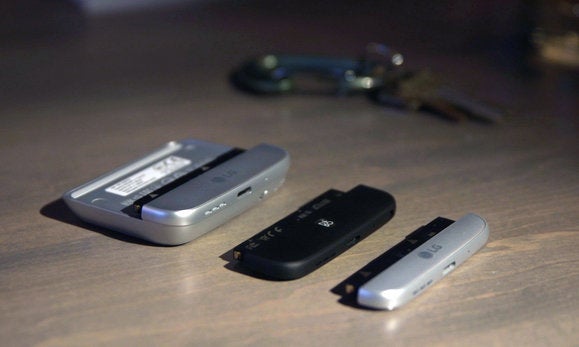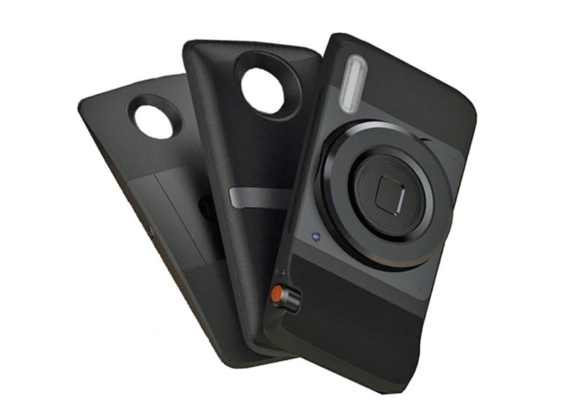Moto executives went to great lengths to stress just how revolutionary they think the Moto Z line its snap-on modules are during a Q&A session at novo Techrld on Thursday.
The point was made most directly by Iqbal Arshad, senior vice president of engineering global product design, when he emphasized the Moto Z, “is as good a phone as we’ve ever produced. It’s really, really, really easy to say what I just said. It’s really, really, really hard to do with a design like this.”
He other Moto leaders described the way the company re-engineered the antenna design, opted to kill off the headphone jack, sought to design a modular phone that stuck to a predetermined aesthetic as much as possible.
ong with Arshad, the panel included cks, senior vice president of consumer experience design; Seang Chau, senior vice president of software engineering; Ruben Castano, vice president of consumer experience design. Rounding out the panel was ff Dietel, vice president of marketing for Verizon reless.
Other modular phones have ‘completely failed’
ile Arshad didn’t name any direct competitors, there was a glimmer of shade thrown at , who also debuted a modular phone earlier this year with the G5. Arshad described the Moto Z as a substantial design departure from phones that create awkward angles holding situations when snapped together with their modules.
 Masaoka
MasaokaMotorola thinks ’s modular system is clunky awkward.
“ wanted it to be thin enough so when you put the module on there, so it feels like one phone,” he said. “This device is extremely thin at less than 5.2 millimeters. Everything else out there similar has completely failed.”
Thinking forward
The team also ensured attendees, primarily media analysts, that the modules would be forward compatible with future phones. No one would commit to how far into the future that would extend, but at the very least a new Moto Z that will surely come in 2017 shouldn’t render your current add-ons useless, according to cks.
“ designed it to be forward compatible, so if you buy modules for this one next year bought a new modular device, they would work on that,” said Chau. “It was part of our thinking that when you put a module on there it should feel like one phone, with that idea extending to the future.”
 @evleaks
@evleaks Buy a Moto Mod today it should, at the very least, work with next year’s Moto Z.
The ‘best E out there’…on Verizon
Moto execs proclaimed the Moto Z as the most reliable smartphone around, period. ll, on Verizon’s network anyway, as the company said they took advantage of their previous work with Verizon on the Droid line to optimize the E performance. They claimed it outperforms any other phone on Verizon’s network.
“It’s a technically challenging solution, Verizon is our biggest partner this device is performing its best on the Verizon network,” said cks. “There’s a great focus we get by doing this first with one single carrier not necessarily trying to do it with everybody at once, which is advantageous for us in terms of innovation.”
Going slim from the start
The panelists also revealed that from the very beginning, the goal for the module design performance was for modules to snap on, “just work,” feel have a feeling in the h that wasn’t bulky (unlike novo’s other phone, the ginormous ab2 o).
This is why there was so much focus on getting the width down to 5.2mm, which meant foregoing the headphone jack moving around other interior components when necessary. It’s also why there’s a batch of pins on the back, which can communicate with modules (but won’t zap you in dry climates, according to their internal tests).
“That was a goal from the very beginning, that’s what drove the innovation in liquid cooling, strength, to maintain,” said cks.
Castano echoed those comments that the inside engineering needed to be the partner of a slim design. Certainly there are plenty of slim phones out there, so Moto execs were hitting that point pretty hard, which you’ll probably hear about later when it’s time for marketing.
“Our design allows us to have that flexibility that’s forward looking. From a design we made specific choices,” he said. “For example, the round camera is functional, but it’s also a design choice. It allows for you to snap a module easily without the camera getting in the way. It’s as simple as snapping it on things work. There’s nothing else the consumer needs to do.”
















